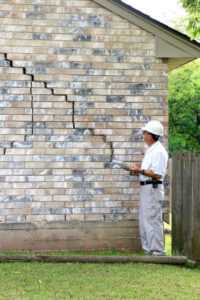Can Concrete Underpinning Be Used to Prevent future issues?
Hey there, homeowners! Let’s chat about something that might not be the most exciting topic, but trust me, it’s super important – concrete underpinning. I know, I know, it sounds like a snooze fest, but hear me out! By the end of this read, you’ll have a clearer understanding of how to prevent future issues with concrete underpinning.
Understanding Concrete Underpinning
You know how sometimes you get that nagging feeling that something’s not quite right with your house?
Maybe you’ve noticed some weird cracks in the walls, or your floors feel a bit… off? Well, that might be your home’s way of saying, “Hey! My foundation needs some love!” The method has been around for a long time and is trusted by engineers and contractors alike.
Why Consider Concrete Underpinning?
Now, you’re probably wondering, “Can’t I just ignore it and hope it goes away?” (We’ve all been there with house problems, right?) But here’s the thing – foundation issues are like that small leak in your roof. Ignore it, and before you know it, you’re dealing with a full-on indoor waterfall!
That’s where concrete underpinning comes in. Think of it as giving your house a really strong pair of shoes. It helps your home stand tall and proud, even when the ground underneath gets a bit shifty.
“But wait,” I hear you say, “isn’t underpinning just for houses that are already falling apart?” Not at all! It can be a super smart move to prevent future issues before things get bad. It’s like going to the dentist for a check-up instead of waiting until you need a root canal. Ouch!
Signs Your Home Might Need Underpinning
Now, I’m not saying you should rush out and start digging under your house tomorrow. (Please don’t do that!) But if you’ve noticed any wonky signs – like doors that stick, floors that aren’t quite level, or walls that are starting to look like modern art with all those cracks – it might be time to call in the pros.
How Concrete Underpinning Works
- Site Assessment:Before any work begins, a thorough assessment of your property is conducted. Engineers will evaluate the current state of your foundation and identify the best approach for underpinning.
- Excavation: Once the plan is in place, excavation begins. The soil under the existing foundation is carefully removed to reach the stable ground. This step is crucial and requires precision to avoid any further damage to the structure.
- Concrete Pouring: After excavation, concrete is poured into the newly created space. This process helps to extend the depth or breadth of the foundation. The concrete is left to cure, forming a solid base that supports your home more effectively.
- Final Adjustments: Once the concrete has cured, final adjustments are made to ensure everything is in place. This may involve adding steel reinforcements or other materials to enhance the foundation’s strength.
Benefits of Preventative Underpinning
Here’s why you might want to consider it, It’s like insurance for your house, but way cooler. Instead of just paying for a piece of paper, you’re making your home stronger. If you ever decide to sell, buyers will be impressed. “Look at this house, standing all sturdy and stuff!” They’ll be fighting over your place! You’ll sleep better at night. No more lying awake wondering if that creaking noise is just the wind or your house doing the cha-cha.
The Importance of Regular Foundation Inspections
Foundation problems can often go unnoticed until they become major issues. That’s why it’s crucial to have regular inspections of your home’s foundation. By catching any potential problems early on, you can save yourself from costly repairs and extensive underpinning work.
A professional inspection will assess the current state of your foundation, identify any areas of concern, and provide recommendations for prevent future issues like concrete underpinning. It’s a small investment that can make a big difference in the long run.
DIY Solutions vs Professional Underpinning
Just remember, this isn’t a DIY project unless you’re secretly a structural engineer. (And if you are, can you come look at my place next?) For the rest of us, it’s best to leave it to the experts. They’ve got all the cool tools and know-how to get it done right.
The Bottom Line
So, there you have it! Concrete underpinning – not just for emergencies anymore. It’s like a spa day for your house’s foundation. And who doesn’t love a good spa day, right?
Take care of your home’s foundation, and it’ll take care of you. Now go give your house a pat and tell it everything’s gonna be alright. You’ve got this, homeowner!

